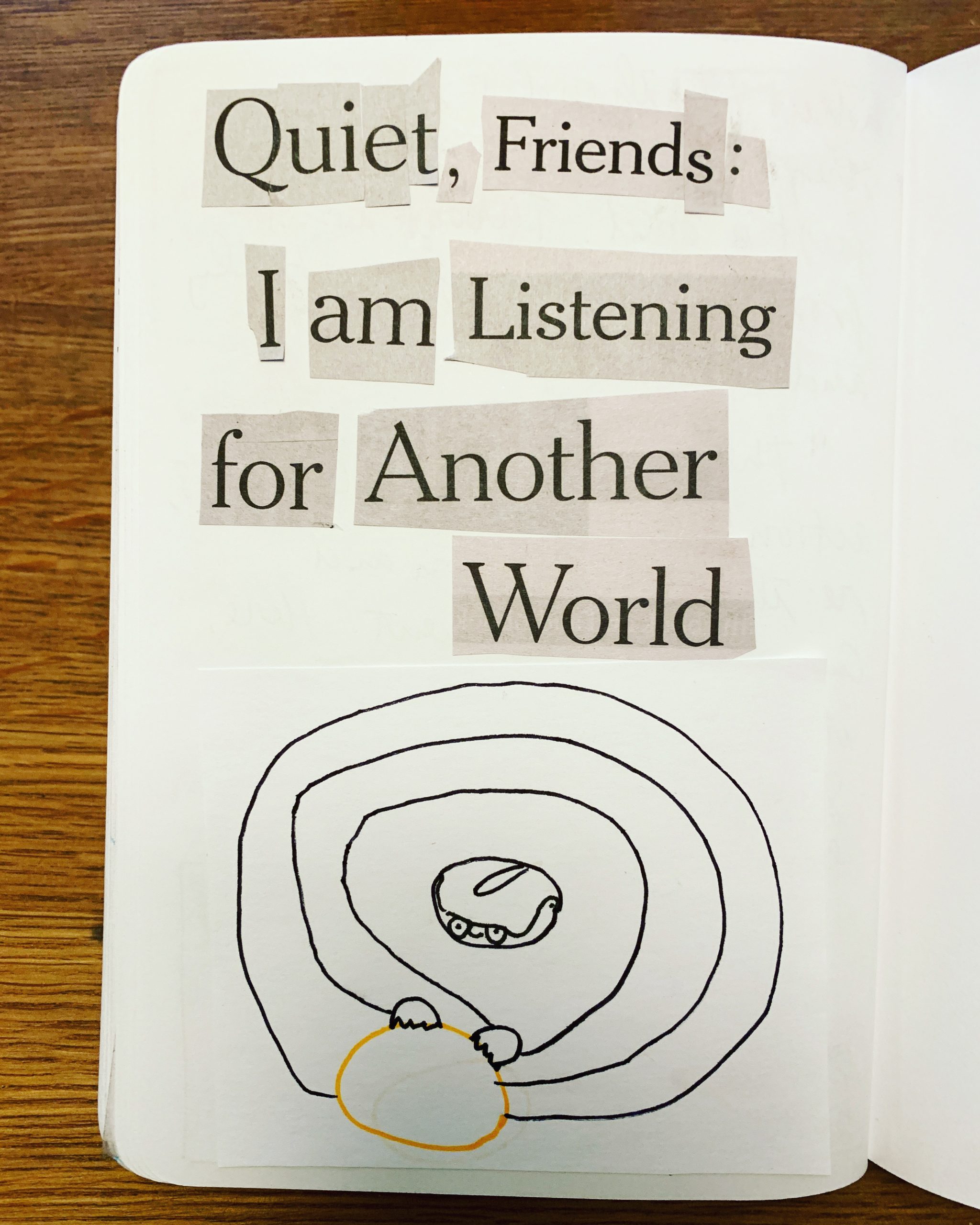
My kids leave abandoned drawings all over the house, so I like to steal them and add (the wrong) words. This is my 7-year-old’s drawing + words clipped from the newspaper.

My kids leave abandoned drawings all over the house, so I like to steal them and add (the wrong) words. This is my 7-year-old’s drawing + words clipped from the newspaper.
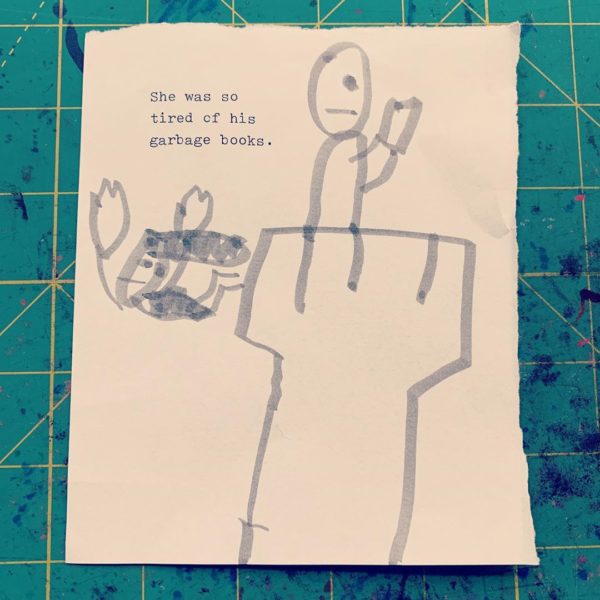
My 4-year-old leaves so many drawings lying around that sometimes I steal them and add my own captions. I made the mistake of showing this batch to him — he was absolutely furious that I added the wrong words to his pictures!
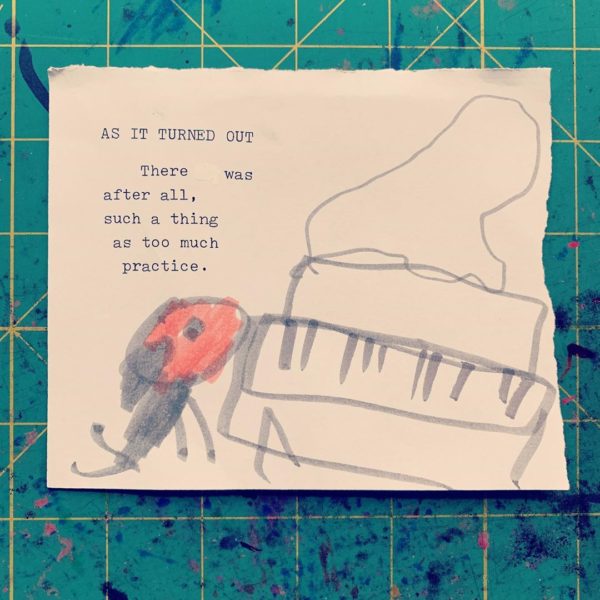

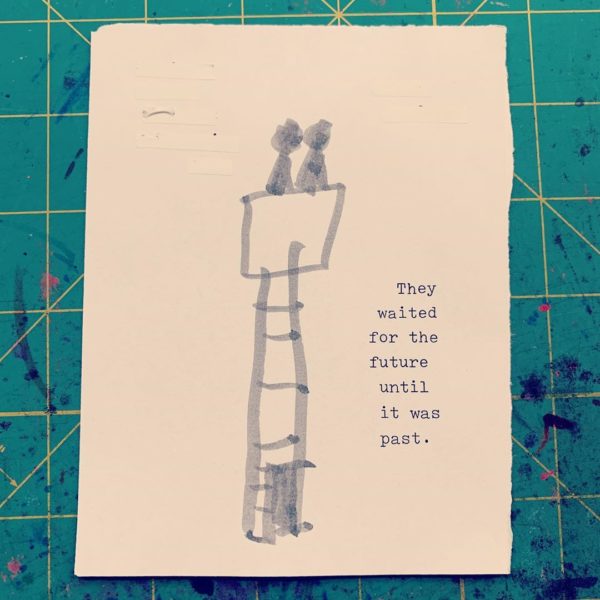

One of my favorite prompts inThe Steal Like An Artist Journal asks the reader to remix a comic strip:

My son got a daily Peanuts calendar for Christmas, so for fun I’ve been taking the old pages and making collages out of them:
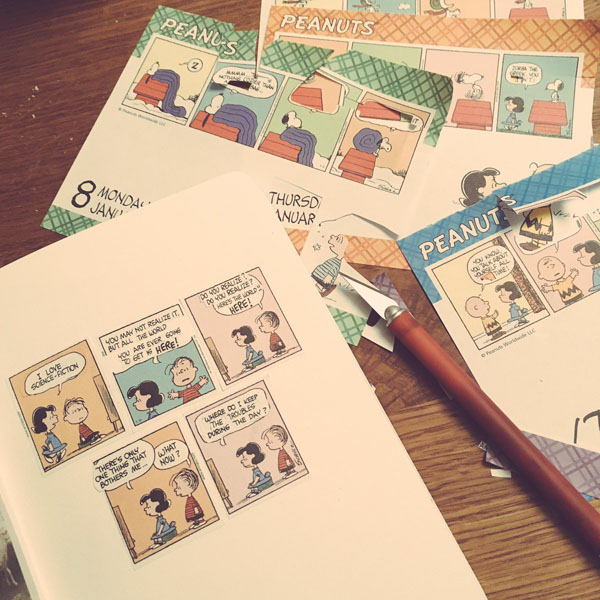
I like to take two or three strips and mash them up: this one has a panel from January 16, 1968, text from Jan. 10 and 13, and most of the January 12th strip:
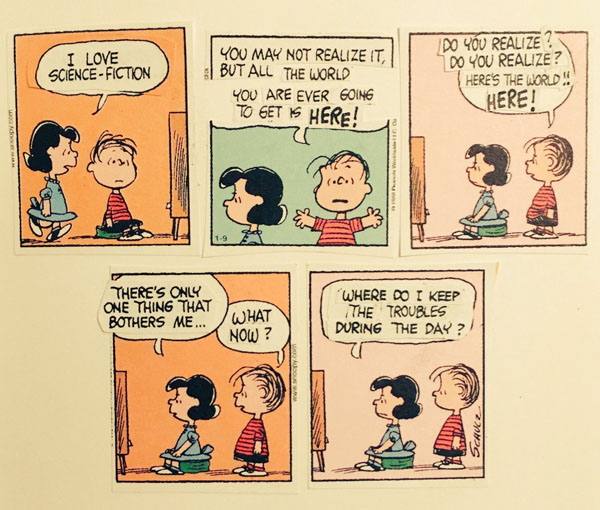
This one is made up of a bunch of extra leftovers:
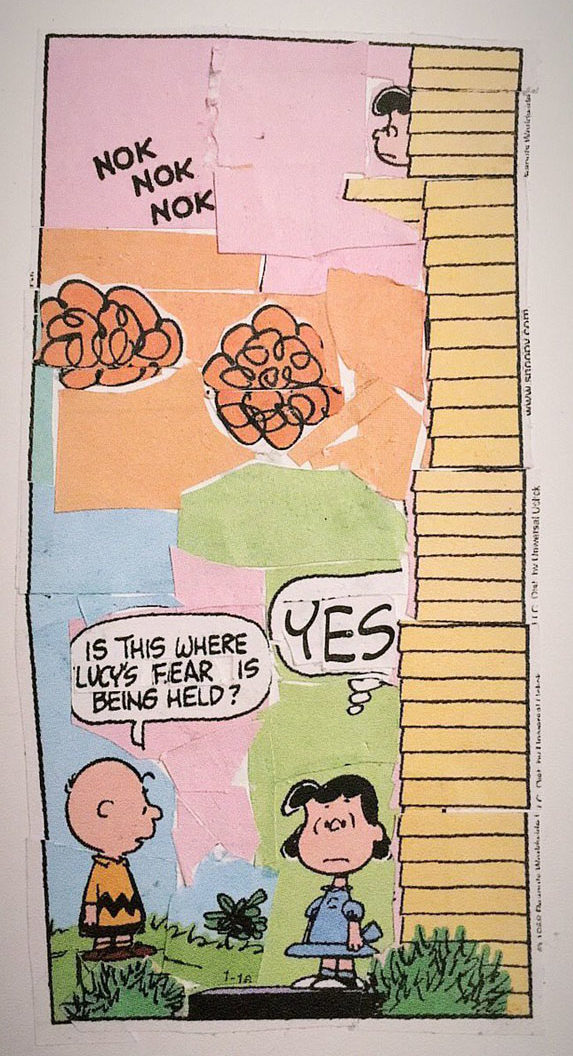
I really love how surrealistic they get when you squeeze two images of the same character into one panel:
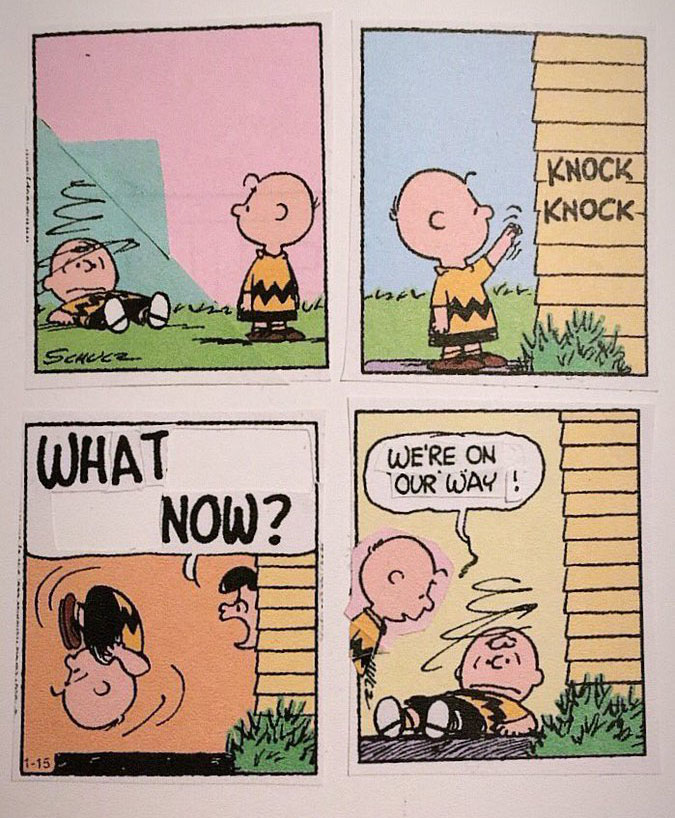
And how just swapping a few bits of text can change a strip’s meaning completely (and make it autobiographical — this was originally about Charlie Brown waiting for his dad to get off work):
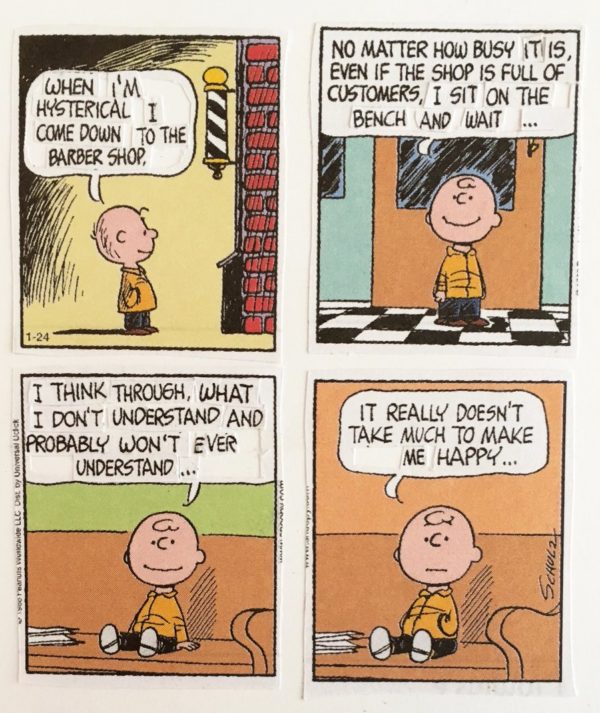
This one starts with a piece of text from some litter I found on my walk:
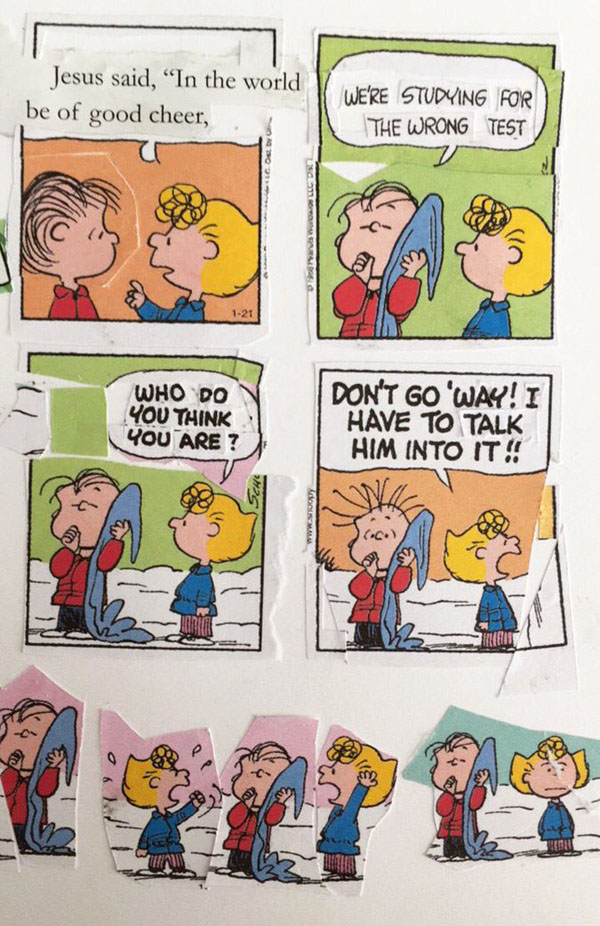
It’s interesting how in the process of cutting it up, you really learn a lot about Schulz’s strip: how wordy the balloons are (something Nancy creator Ernie Bushmiller famously complained about), how everything belongs to one world and is easily re-arranged and re-combined. Heck, even the characters can be spliced into each other: here’s Charlie Brown with Linus’s hair:

It seems like this kind of thing would be a great exercise for the classroom. I’ve done a variation in workshops in which participants take single panel cartoons from the comics section and swap the captions, like this example in Gary Larson’s The Prehistory of the Far Side:

The Far Side and Dennis the Menace used to be side by side in the Dayton Daily News. One day, back in August of 1981, someone “accidentally” switched their captions. What’s most embarrassing about this is how immensely improved both cartoons turned out to be.
Here’s a Lynda Barry caption from One! Hundred! Demons! pasted on top of Charles Burns’ “The Smell of Shallow Graves” (both reprinted in this NYTimes article):
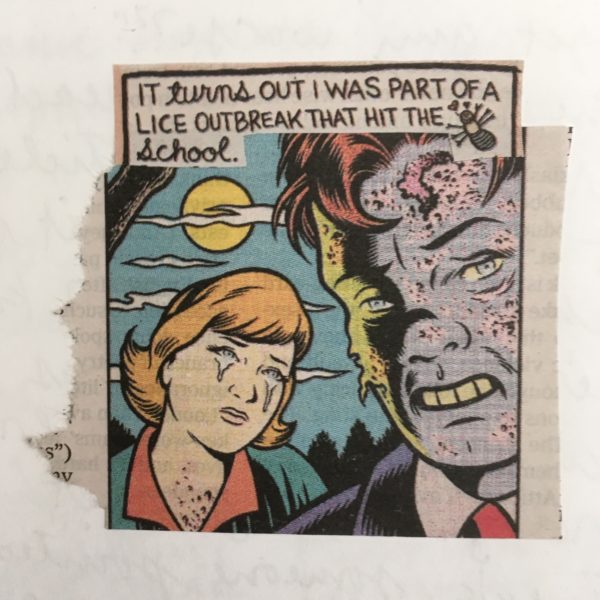
Once a year, before I recycle all my old New Yorkers, I go through them with an x-acto blade. I clipped this little pie chart out of an advertisement, and cut out the labels.
It feels to me like a gag cartoon that needs finished. (A la Indexed.)
Fill in the blanks in the comments.
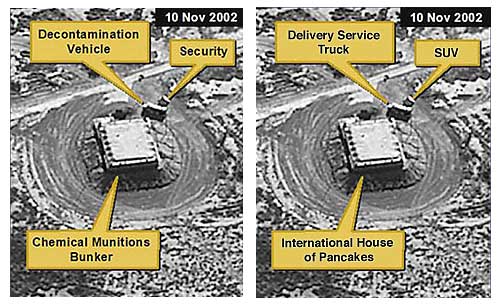
Yesterday, I was thinking about telling a story in pictures without words, and so today, in the aftermath of all the Sarah Palin pregnancy conspiracy theory madness, I started thinking about telling a story with words added to pictures.
The documentary filmmaker Errol Morris had it nailed in his NYTimes article, “Photography As A Weapon,” about photoshopping, forgeries, image processing, captions (and John Heartfield and King Geedorah!):
Doctored photographs are the least of our worries. If you want to trick someone with a photograph, there are lots of easy ways to do it. You don’t need Photoshop. You don’t need sophisticated digital photo-manipulation. You don’t need a computer. All you need to do is change the caption.
I don’t know what these buildings were really used for. I don’t know whether they were used for chemical weapons at one time, and then transformed into something relatively innocuous, in order to hide the reality of what was going on from weapons inspectors. But I do know that the yellow captions influence how we see the pictures. “Chemical Munitions Bunker” is different from “Empty Warehouse” which is different from “International House of Pancakes.” The image remains the same but we see it differently.
Change the yellow labels, change the caption and you change the meaning of the photographs. You don’t need Photoshop. That’s the disturbing part. Captions do the heavy lifting as far as deception is concerned.
If you read through this Daily Kos piece, the writer presents pictures of Palin at various stages of her pregnancy looking thin and trim as “evidence” that she wasn’t really pregnant with her fifth child, but it was her daughter, Bristol, who was pregnant. The article is simply a list of photographs with captions—and the captions control how we read the photographs.
Many folks pointed to this picture as evidence of a Bristol Palin “baby bump”:

A picture which would otherwise be an innocuous portrait of a nice-looking family is turned into a sinister conspiracy by the words, or caption, adjacent to it.
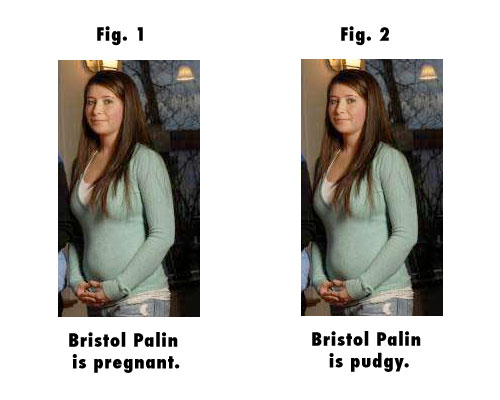
The moral of the story is that pictures can say whatever we want them to say, provided we use the right words.
The power of captions can be used for good, or it can be used for evil. For a cartoonist, it’s a potent weapon, which can take any drawing and turn it in many different ways. Take this hasty doodle:
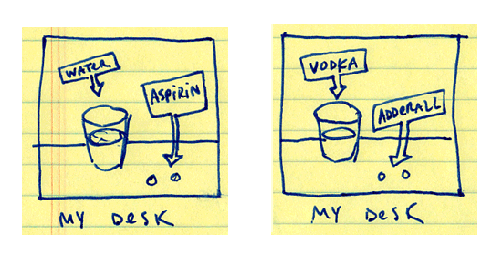
Depending on which captions I use, you’ll get a different picture of who I am, yes? In comics, it seems, the old creative writing adage “show don’t tell” is useless—you can certainly tell as much as you show, show what you tell, or tell what you show.
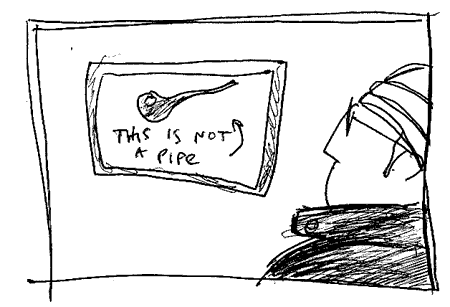
I’d love to hear your own thoughts on the use of captions in the comments below. I also recommend taking a look at Derik Badman‘s article, “Text In Comics.”
This site participates in the Amazon Affiliates program, the proceeds of which keep it free for anyone to read.